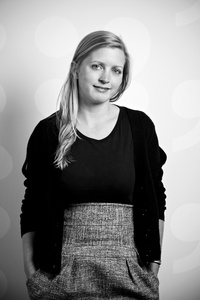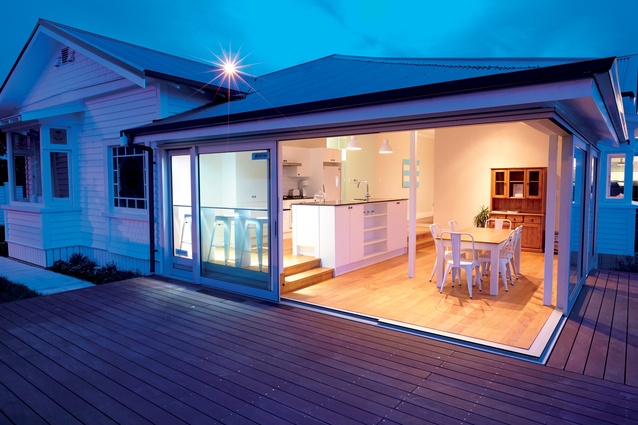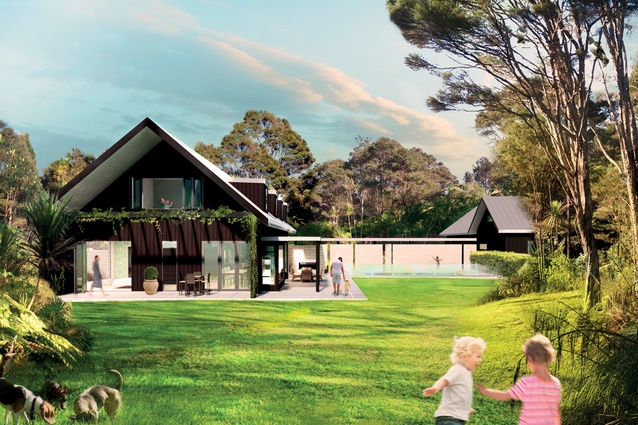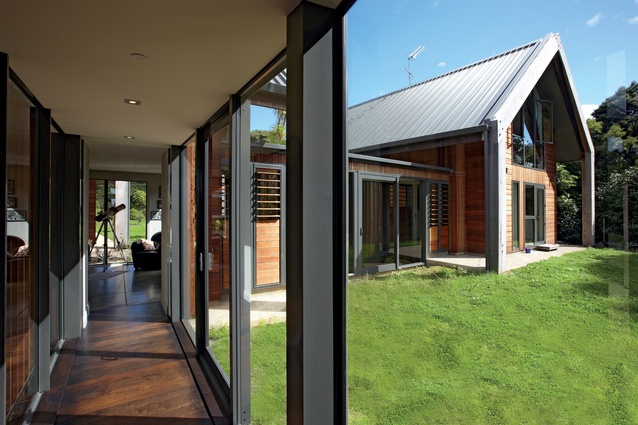Vicky Freeman
Did you want to be an architect when you were growing up?

It wasn’t until the last few years of high school that I considered architecture as a profession. I had recently moved to NZ from the UK and was intrigued by the flimsy timber boxes that seemed to spring up almost overnight. Compared to homes I was familiar with in the UK, these houses were light, open and unique. I became interested in the way spaces are shaped and wanted to learn more about the way people inhabit their homes.
Can you describe your architecture career thus far?
After completing three years at the University of Auckland and with some architectural work experience under our belts, my partner Simon and I spent a year in Europe to take a break from study and to do an architectural road trip around the Continent. While in London, I also worked for the British Science Museum, documenting the relocation of 50 lineal kilometres of rare books and the design for the conversion of an old barracks building into a new archive library.
Back in NZ, my studies had benefited from the time away and it wasn’t long before I started working for Context Architects. During my time at Context I’ve been exposed to all stages of the architectural process and have been involved in a variety of work including new houses, renovations, commercial fitouts, furniture design, community projects and, more recently, medium density housing.
I count myself fortunate to have worked on both commercial and residential projects and enjoy transferring skills and knowledge between the two.
What are you working on at the moment?
At work, I’m currently in the throes of an infill subdivision project and am soon to start on a medium-density residential development. I’m also looking forward to becoming a registered architect in 2014.
At home, we’re putting the finishing touches to the renovation of our 67m2 1948 house. It’s been challenging but we get a lot of satisfaction in carrying through our designs and doing the building work ourselves. From the start, we were particularly concerned about material waste, end-of-life uses and indoor air quality so we repurposed waste materials where possible and selected natural oil finishes for the timber work. Rimu studs were salvaged and made into the kitchen benches, the old built-in bath was changed to free standing and we’re experimenting with using the demolished plasterboard sheets in the garden to break up the clay earth.
What do you enjoy most about working in architecture?
The people. Architecture is collaborative, with a huge pool of creative and skilled people.
I especially enjoy initial client meetings where you can nut out a comprehensive brief and really get to the core of how they want to live. At the end of the project I find it’s fascinating to reflect on the design with the client and discuss what worked and what didn’t, what they weren’t expecting (good and bad) and how it’s improved their quality of life.
If you could design a house anywhere in New Zealand, where would it be?
I’d love the challenge of a micro site in the city - 100m2 or less. I spent a year living in a central Auckland apartment and really enjoyed the proximity of everything and seeing the street life below. What’s exciting though is quality urban living – communal spaces, roof gardens, mixed-use developments. It’s also satisfying to show that bigger is not always better; where there is a limit on space, inventive storage systems, flexible room layouts and good use of daylight can make a compact apartment a delight to live in.












